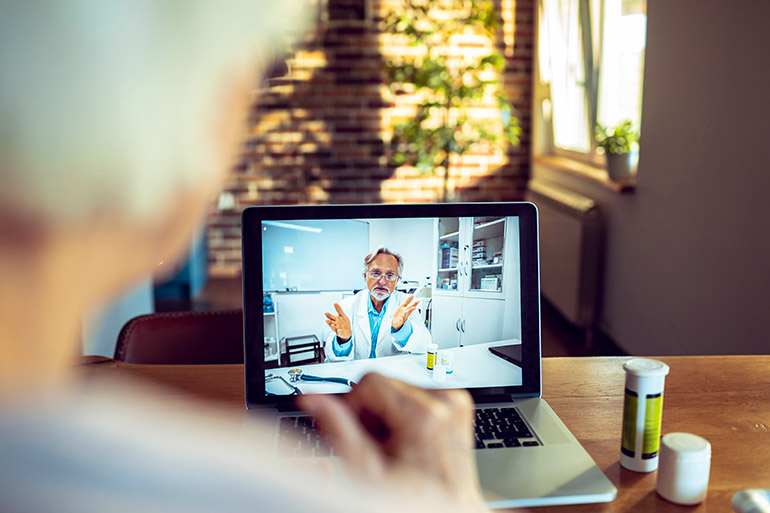
Efficacy and cost prove similar to traditional face-to-face management
While virtual medical and rehabilitation appointments seemed novel when COVID-19 first appeared, they now seem to be part of the new norm and might be paving the way to the future.
A recent review paper, co-authored by Brodie Sakakibara with the Centre for Chronic Disease Prevention and Management (CCDPM) has determined that virtual appointments, in the form of telerehabilitation, also work for people recovering from a stroke.
After a stroke, a client is provided with a therapy program to help re-gain loss of skills or motion—this can range from speech and memory, strength, balance and endurance. While not initially introduced for disease outbreaks, Sakakibara a UBCO assistant professor says research shows remote therapy can be effective during stroke recovery.
“Telerehabilitation has been promoted as a more efficient means of delivering rehabilitation services to stroke patients while also providing care options to those unable to attend conventional therapy,” says paper co-author Sakakibara. “These services can be provided to remote locations through information and communication technologies and can be accessed by patients in their homes.”
To learn how effective telerehabilitation can be, six different clinical trials—examining stroke telerehabilitation programs—were launched across Canada as part of a Heart and Stroke Foundation initiative. People recovering from a stroke were provided with interventions ranging from lifestyle coaching to memory, speech skills and physical-exercise training.
“Researchers from each of the six trials came together to write a review paper describing their experiences conducting a telerehabilitation study, and to report on the facilitators and barriers to the implementation of telerehab services within a research context,” says Sakakibara.
Going forward with telerehabilitation as a new reality, Sakakibara says the study authors determined there are important lessons learned from each of the six trials. Most notably, the efficacy and cost of telerehabilitation is similar to that of traditional face-to-face management. He also notes patients mostly reported satisfaction with the telerehabilitation when therapists were trained appropriately, and when there was some social interaction. Overall, clinicians prefer face-to-face interactions but will use telerehabilitation when face-to-face is not feasible.
And finally, since seniors are a key target group for stroke rehabilitation—as stroke is associated with aging—the technology needs to be easy to use and suit the needs of the end users.
“The older adult of today, in terms of technology comfort and use, is different than the older adult of tomorrow,” he says. “While there might be some hesitation of current older adults using technology to receive health and rehab services, the older adult of tomorrow likely is very comfortable using technology. This represents a large opportunity to develop and establish the telehealth/rehabilitation model of care.”
Sakakibara notes COVID-19 has amplified the necessity for telehealth and telerehabilitation for many Canadians—especially those in remote areas or for the estimated 70 per cent of stroke victims who are no longer able to drive.
“Prior to the outbreak, telehealth/rehabilitation was highly recommended in Canadian stroke professional guidelines, but was underused,” he says. “Now in response to COVID-19, the use of telerehabilitation has been accelerated to the forefront. Once these programs are implemented in practice, it’ll be part of the norm, even when the outbreak is over. It is important that we develop and study telerehabilitation programs to ensure the programs are effective and benefit the patients.”
The review paper, partially funded by the Heart and Stroke Foundation, was prepared by a team of researchers from across Canada. It was published recently in Telemedicine and e-Health.